
A quasar is an extremely luminous active galactic nucleus (AGN). It is sometimes known as a quasi-stellar object, abbreviated QSO. The emission from an AGN is powered by a supermassive black hole with a mass ranging from millions to tens of billions of solar masses, surrounded by a gaseous accretion disc. Gas in the disc falling towards the black hole heats up and releases energy in the form of electromagnetic radiation. The radiant energy of quasars is enormous; the most powerful quasars have luminosities thousands of times greater than that of a galaxy such as the Milky Way. Quasars are usually categorized as a subclass of the more general category of AGN. The redshifts of quasars are of cosmological origin.

Eleanor Margaret Burbidge, FRS (née Peachey; 12 August 1919 – 5 April 2020) was a British-American observational astronomer and astrophysicist. In the 1950s, she was one of the founders of stellar nucleosynthesis and was first author of the influential B2FH paper. During the 1960s and 1970s she worked on galaxy rotation curves and quasars, discovering the most distant astronomical object then known. In the 1980s and 1990s she helped develop and utilise the Faint Object Spectrograph on the Hubble Space Telescope. Burbidge was also well known for her work opposing discrimination against women in astronomy.
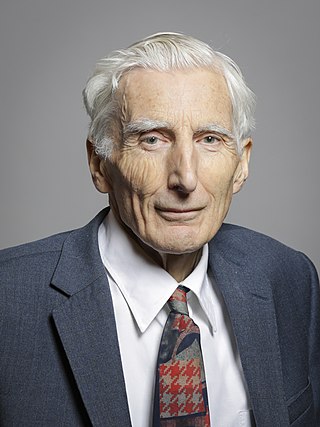
Martin John Rees, Baron Rees of Ludlow, is a British cosmologist and astrophysicist. He is the fifteenth Astronomer Royal, appointed in 1995, and was Master of Trinity College, Cambridge, from 2004 to 2012 and President of the Royal Society between 2005 and 2010.

An Einstein ring, also known as an Einstein–Chwolson ring or Chwolson ring, is created when light from a galaxy or star passes by a massive object en route to the Earth. Due to gravitational lensing, the light is diverted, making it seem to come from different places. If source, lens, and observer are all in perfect alignment (syzygy), the light appears as a ring.
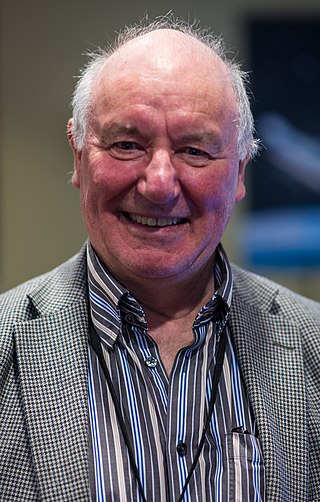
Malcolm Sim Longair is a British physicist. From 1991 to 2008 he was the Jacksonian Professor of Natural Philosophy in the Cavendish Laboratory at the University of Cambridge. Since 2016 he has been Editor-in-Chief of the Biographical Memoirs of Fellows of the Royal Society.
(Geoffrey) Michael Rowan-Robinson is an astronomer, astrophysicist and Professor of Astrophysics at Imperial College London. He previously served as head of the astrophysics group until May 2007 and from 1981 to 1982, and as Gresham Professor of Astronomy.
Amy J. Barger is an American astronomer and Henrietta Leavitt Professor of Astronomy at the University of Wisconsin–Madison. She is considered a pioneer in combining data from multiple telescopes to monitor multiple wavelengths and in discovering distant galaxies and supermassive black holes, which are outside of the visible spectrum. Barger is an active member of the International Astronomical Union.
Andrew Christopher Fabian is a British astronomer and astrophysicist. He was Director of the Institute of Astronomy, University of Cambridge from 2013 to 2018. He was a Royal Society Research Professor at the Institute of Astronomy, Cambridge from 1982 to 2013, and Vice-Master of Darwin College, Cambridge from 1997 to 2012. He served as president of the Royal Astronomical Society from May 2008 through to 2010.
George Petros Efstathiou is a British astrophysicist who is Professor of Astrophysics (1909) at the University of Cambridge and was the first Director of the Kavli Institute for Cosmology at the University of Cambridge from 2008 to 2016. He was previously Savilian Professor of Astronomy at the University of Oxford.
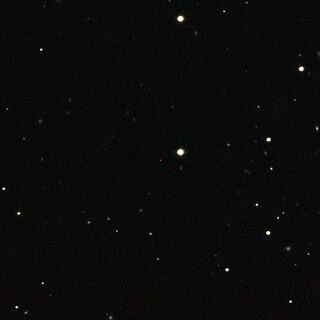
ULAS J1120+0641 was the most distant known quasar when discovered in 2011, surpassed in 2017 by ULAS J1342+0928. ULAS J1120+0641 was the first quasar discovered beyond a redshift of z = 7. Its discovery was reported in June 2011.

Warrick John Couch is an Australian professional astronomer. He is currently a professor at Swinburne University of Technology in Melbourne. He was previously the Director of Australia's largest optical observatory, the Australian Astronomical Observatory (AAO). He was also the president of the Australian Institute of Physics (2015–2017), and a non-executive director on the Board of the Giant Magellan Telescope Organization. He was a founding non-executive director of Astronomy Australia Limited.
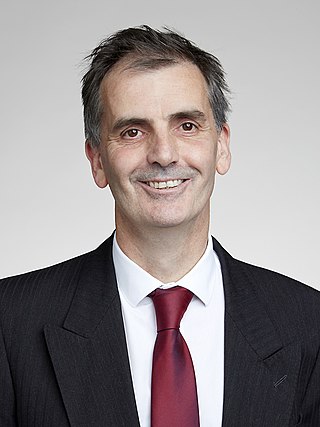
James Scott Dunlop is a Scottish astronomer and academic. He is Professor of Extragalactic Astronomy at the Institute for Astronomy, an institute within the School of Physics and Astronomy at the University of Edinburgh.

Georges Meylan is a Swiss astronomer, born on July 31, 1950, in Lausanne, Switzerland. He was the director of the Laboratory of Astrophysics of the Swiss Federal Institute of Technology (EPFL) in Lausanne, Switzerland, and now a professor emeritus of astrophysics and cosmology at EPFL. He is still active in both research and teaching.

ULAS J1342+0928 is the second-most distant known quasar detected and contains the second-most distant and oldest known supermassive black hole, at a reported redshift of z = 7.54. The ULAS J1342+0928 quasar is located in the Boötes constellation. The related supermassive black hole is reported to be "800 million times the mass of the Sun".

Katherine Mary Blundell is a Professor of Astrophysics at the University of Oxford and a supernumerary research fellow at St John's College, Oxford. Previously, she held a Royal Society University Research Fellowship, and fellowships from the Royal Commission for the Exhibition of 1851 and Balliol College, Oxford.
Katherine Gudrun Isaak is a British astrophysicist and the Project Scientist for the European Space Agency Characterising Exoplanet Satellite mission (CHEOPS). She is based at European Space Research and Technology Centre.
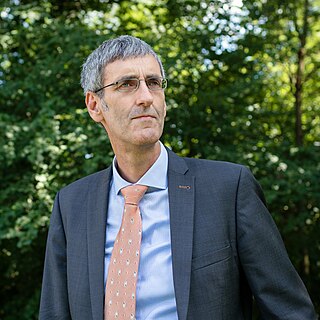
Frank Eisenhauer is a German astronomer and astrophysicist, a director of the Max Planck Institute for Extraterrestrial Physics (MPE), and a professor at Technical University of Munich. He is best known for his contributions to interferometry and spectroscopy and the study of the black hole at the centre of the Milky Way.











